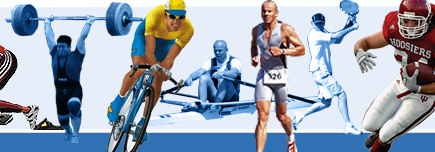HIP INJURIES
Hip Pointer: Is a bruise caused by direct contact to the front hip bone. This injury can produce extreme pain and limit normal motion at the hip and trunk. Because of close proximity of internal organs, follow-up with a family physician is advised to rule out potential fracture or internal injury. Range of motion exercises may begin to help minimize pain and swelling if all other injuries are ruled out. Ice and anti-inflammatories will also help reduce the effects of the injury.
Piriformis Syndrome: This condition refers to irritation of the piriformis muscle which lies underneath the gluteus muscle, or buttock. Because the sciatic nerve passes underneath or through the piriformis muscle, burning or numbness/tingling may occur due to nerve irritation. Pain may start in the buttock and radiate down the affected leg. It is important to seek proper medical attention to rule out referred pain from the spine. In most cases, piriformis syndrome may be alleviated through chiropractic care and lower extremity flexibility program.
Strains: Injuries to the muscles and their tendons due to a forceful contraction of the muscle involved.
Groin: Injury to the inner thigh caused by running, jumping, twisting, kicking. Signs and symptoms may range from mild tenderness over the muscle involved to the inability to contract the muscle and walk. There will be localized pain and swelling and in severe cases, the person may have bruising to the inner thigh, indicating bleeding to the injured muscle. Depending upon the severity, treatment may include ice, compression wrap, crutches (if unable to walk). Rehabilitation is usually slow and controlled to minimize re-injury.
Quad: Injury to the front of the thigh caused by a forceful contraction of the quad muscle when the hip is bent and the leg is straight (as in a kicking movement). Signs and symptoms may range from mild tenderness to the touch to the inability to walk without pain. Bruising may be present with associated swelling. Treatment includes ice, anti-inflammatories, crutches (if unable to walk). In most cases, rehabilitation may be warranted to regain proper mobility.
Iliotibial Band Syndrome: Inflammation of the thick, fibrous tissue that runs from the top of the hip to just below the knee. This injury commonly occurs in runners and can be very debilitating. Formal rehabilitation may be required to reduce pain and inflammation and restore proper muscle balances throughout the pelvic region. Once the pain diminishes, a thorough running analysis may be completed to prevent recurrence of the injury.
|















